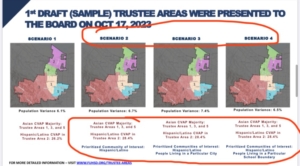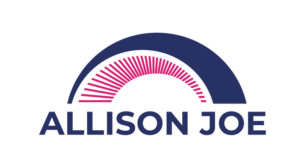Allison’s public comment at March 20 Map Hearing

I appreciate everyone’s dedication, care, and work on the redistricting process. Equity can look a lot of different ways with different outcomes and methods. It should always center the vulnerable and those who are the most marginalized by these processes. The fact that these maps created a trustee area that prioritized Hispanics/Latinos seems to have gotten dismissed. This is a specifically protected racial group under the CVRA and the group in the school district with the most historically persistent gaps in opportunity that also correlate with home language, income, and parent education level.
Hispanic/Latino Citizen Voting Age Population;
Map 1: 26.2%
Map 2: 28.4%
Map 3: 28.4%
Map 4: 28.4%
Map 5: 27.7%
Map 6: 27.7%
Map 7: 27.7%
The work of equity means elevating the voices and serving the underserved on their terms. At meetings with Spanish speaking Hispanic/Latino parents, they communicated that they didn’t feel confident in their understanding of the process but would want the trustee area that created the largest concentration of Hispanics/Latinos. They may or may not have understood which maps accomplished this, but there was a consensus in their wishes. Subsequent versions of maps, although legal and prioritizing other community interests, came close but did not accomplish this. Advocates for equity should have helped them understand which maps matched their priorities and made sure these voices were elevated and prioritized.
Our systems are designed to dismiss and marginalize the powerless and invisible. We are all part of the system. Perhaps the difference between 28.4%, 26.2%, and 27.7% Hispanic/Latino representation were deemed too small to matter. Was that decided by Hispanics/Latinos? Or was it decided by people who had a seat at the table, who understood the processes, who organized the outreach, who could flood an inbox with advocacy emails, and felt empowered to make public comments, who decided for them, disempowering them in the process? It takes 50% +1 vote to win an election. Who decided their .7% didn’t matter? Probably not Hispanics/Latinos.
The biggest barriers to educational social justice are 1) unconscious bias and 2) parents with privilege acting on the system in their own interests without realizing the unintended consequences for others who are more vulnerable. Are we a part of the problem or a part of the slow, difficult, uncomfortable path to shifting the systems that we are a part of to truly work better for everyone? If we’re not centering and serving the underserved, then we’re not centering and serving the underserved.
Equity work is hard and we don’t always get it right. Good intentions are a start. When we know better, we can do better. Let’s do better.


Leave a Reply
Want to join the discussion?Feel free to contribute!